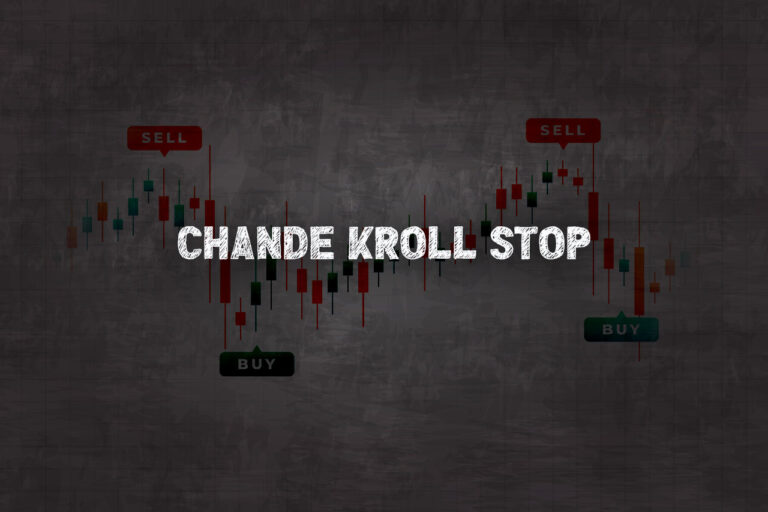1. Understanding Volatility Indicators
Volatility indicators, an integral part of trading, are statistical measures that predict price changes in a financial market. Traders use these indicators to understand market trends and to make informed decisions. The concept of volatility is often misunderstood, yet its importance cannot be overstated. It’s the degree of variation of a trading price series over time, typically measured by the standard deviation of logarithmic returns.
Historical Volatility, also known as statistical volatility, is one such indicator. It measures the changes of an underlying asset over time and provides a relative measure of risk. Traders often use historical volatility to predict future volatility, making it a key tool in their arsenal.
Implied Volatility, on the other hand, is a dynamic measure of volatility that changes with market sentiment. It is derived from the market price of a market traded derivative (specifically, an option). Unlike historical volatility, implied volatility isn’t a reflection of past changes, but a projection of future volatility.
The Volatility Index (VIX) is another popular volatility indicator. Often referred to as the ‘fear gauge’, it measures market risk, fear and stress before they are reflected in the underlying markets.
Average True Range (ATR) is a volatility indicator that reflects the degree of price volatility. It’s not a directional indicator, rather it provides the degree of price volatility.
Bollinger Bands, another widely used volatility indicator, consist of a middle band with two outer bands. The outer bands are usually set 2 standard deviations above and below the middle band. Bollinger Bands expand and contract with the volatility of prices.
Understanding these volatility indicators and how to apply them effectively can greatly enhance your trading strategy. However, it’s crucial to remember that no indicator is foolproof. They should be used in conjunction with other tools and strategies for the best results.
1.1. Definition of Volatility Indicators
Volatility indicators are vital tools in the arsenal of every trader. They play a pivotal role in revealing the price behavior of a security, thus enabling traders to make informed decisions. Essentially, these indicators provide a measure of the rate at which the price of a security increases or decreases for a set of returns. Volatility is a crucial element in trading, as it gauges the level of risk involved.
The higher the volatility, the higher the risk, and consequently, the potential for significant returns – or losses. Conversely, lower volatility often indicates a less risky, but also potentially less rewarding market. Volatility indicators are, therefore, an integral part of risk management strategies.
There are several types of volatility indicators, each with its unique approach and perspective. These include the Average True Range (ATR), the Bollinger Bands, and the Relative Strength Index (RSI). Each of these indicators provides different insights into market volatility, allowing traders to tailor their strategies to the current market conditions.
The ATR, for instance, calculates the average trading range over a specific period, providing a measure of the overall volatility. The Bollinger Bands, on the other hand, plot two standard deviations away from a simple moving average, thus indicating the level of volatility relative to the average price. Lastly, the RSI measures the speed and change of price movements, providing a momentum-based perspective on volatility.
These volatility indicators can be used in isolation or in conjunction with other indicators, providing traders with a comprehensive understanding of the market’s volatility. By mastering these tools, traders can effectively navigate the often tumultuous waters of the financial markets, maximizing their potential for profit while minimizing risk.
1.2. Types of Volatility
In the dynamic world of trading, understanding volatility is akin to mastering the pulse of the market. There are two primary types of volatility that traders need to be acquainted with: Historical Volatility (HV) and Implied Volatility (IV).
Historical Volatility, as the name suggests, is a measure of market fluctuations over a specified period in the past. It is calculated by determining the annualized standard deviation of a stock’s daily price changes. HV provides an overview of how much a security’s price has deviated from its average price, giving traders a sense of the stock’s price range. However, it’s important to remember that past performance doesn’t guarantee future results, so HV should be used in conjunction with other indicators for a holistic view of the market.
On the other hand, Implied Volatility is a forward-looking metric that reflects the market’s expectation of a security’s future volatility. IV is derived from an option’s price and shows what the market predicts about a stock’s potential movement. Unlike HV, IV isn’t based on historical data; instead, it gauges market sentiment and anticipates future price swings. It’s a vital tool for options traders, especially when planning strategies around earnings announcements or other significant events.
Between these two types of volatility, traders can gain a comprehensive understanding of market dynamics. By harnessing the insights from both HV and IV, they can make informed decisions and optimize their trading strategies.
2. Top Volatility Indicators for Traders
When navigating the tumultuous seas of market trading, the adept trader knows that understanding volatility is key to staying afloat. Among the myriad of tools available, two stand out as the top volatility indicators: the Bollinger Bands and the Average True Range (ATR).
The Bollinger Bands are a volatility indicator that creates a band of three lines—the middle line being a simple moving average (SMA) and the outer lines being standard deviation lines. The basic interpretation of Bollinger Bands is that price tends to stay within the upper and lower bands. Sharp price changes tend to occur after the bands tighten, as volatility lessens. When prices move outside the bands, a continuation of the current trend is implied.
The Average True Range (ATR), on the other hand, is a measure of volatility introduced by Welles Wilder in his book, “New Concepts in Technical Trading Systems”. The true range indicator is the greatest of the following: current high less the current low, the absolute value of the current high less the previous close, and the absolute value of the current low less the previous close. The ATR is a moving average of the true ranges.
Both these indicators provide valuable insight into market volatility, but it’s essential to remember that they don’t predict direction, only volatility. They can be used in conjunction with other indicators to create a robust trading strategy. Whether you’re a novice trader just starting out or a seasoned professional fine-tuning your approach, understanding and utilizing these top volatility indicators can be a game-changer in your trading journey.
2.1. Average True Range (ATR)
Developed by J. Welles Wilder, the Average True Range (ATR) is a technical analysis indicator that measures market volatility by decomposing the entire range of an asset price for that period. Specifically, ATR is a measure of volatility introduced by market data that includes the asset’s high, low, and close for the day.
The ATR is calculated by taking the maximum of the following three measures: the current high minus the current low; the absolute value of the current high minus the previous close; and the absolute value of the current low minus the previous close. This calculation method captures the volatility from gaps and limit moves in the market.
ATR does not provide a directional bias or predict future price direction, instead, it simply quantifies the degree of price volatility. From a trading perspective, high ATR values indicate high volatility and may be an indication of panic selling or panic buying. Low ATR values, on the other hand, represent low volatility and can indicate investor indecision or market consolidation.
Traders often use the ATR to manually calculate where to set entry points and exit points for trades. For example, a trader may choose to enter a trade if the price moves more than 1 ATR above the previous close, and may set a stop loss at 1 ATR below the entry price.
The Average True Range (ATR) is a versatile tool that helps traders to more fully understand the market context in which they’re trading. By providing an accurate measure of volatility, it enables traders to make more informed decisions about their trading strategies.
2.2. Bollinger Bands
In the world of trading, Bollinger Bands stand as a beacon of volatility indication. Developed by the legendary trader John Bollinger, this technical analysis tool is a favorite among traders for its simplicity yet striking effectiveness. The concept behind Bollinger Bands is straightforward. It consists of a simple moving average (SMA) around which two lines, the upper and lower bands, are drawn. These bands are plotted two standard deviations away from the SMA.
The beauty of Bollinger Bands lies in their ability to adapt to changing market conditions. When the market is calm, the bands contract, signaling a period of low volatility. Conversely, when the market is volatile, the bands expand, painting a picture of high volatility. This dynamic nature of Bollinger Bands makes them a highly versatile tool, applicable in various market conditions.
Traders utilize Bollinger Bands in numerous ways. One popular strategy is the ‘Bollinger Bounce’. This strategy is based on the principle that price tends to return to the middle of the bands. Therefore, when the price touches the upper band, traders consider it overbought and expect it to revert to the mean. Similarly, when the price touches the lower band, it is considered oversold, and a bounce back to the middle band is anticipated.
Another well-known strategy is the ‘Bollinger Squeeze’. This strategy capitalizes on the periods when the bands are close together, indicating low volatility. A squeeze is often followed by a significant price movement, or breakout. Traders watch for these squeezes and then place trades based on the direction of the breakout.
However, like any other trading tool, Bollinger Bands are not infallible. They should be used in conjunction with other indicators and analysis techniques to increase their effectiveness. Nevertheless, with their ability to identify periods of high and low volatility and provide potential entry and exit points, Bollinger Bands have earned their place in the toolbox of many successful traders.
2.3. Relative Strength Index (RSI)
Among the pantheon of volatility indicators, the Relative Strength Index (RSI) stands tall with its unique ability to measure the speed and change of price movements. Created by J. Welles Wilder, the RSI is a momentum oscillator that ranges between 0 and 100, providing traders with signals of potential overbought or oversold conditions in the market.
The RSI is calculated using the formula: RSI = 100 – (100 / (1 + RS)), where RS (Relative Strength) is the average gain divided by the average loss over a specified period. Traditionally, a 14-day period is used for calculations, but this can be adjusted to fit different trading strategies.
How can traders use the RSI? When the RSI exceeds 70, it indicates that a security might be overbought and could be due for a price correction. Conversely, an RSI below 30 implies that a security may be oversold, potentially representing a buying opportunity. Some traders also look for ‘RSI divergence’ – when the price of a security is making new highs or lows, but the RSI is failing to do so. This divergence can be a powerful signal of a potential market reversal.
In the world of volatility, the RSI offers a unique perspective. It doesn’t just track price changes, but the speed and magnitude of these changes. This makes it an invaluable tool for traders looking to gauge market sentiment and identify potential trading opportunities in volatile markets.
However, it’s essential to remember that, like all indicators, the RSI is not infallible and should be used in conjunction with other tools and analysis methods. It’s also crucial to understand that the RSI is more effective in trending markets, as opposed to ranging ones.
The RSI is a powerful volatility indicator, but it’s not a crystal ball. It’s a tool that, when used correctly, can provide valuable insights into market dynamics and help traders make more informed decisions.
2.4. Volatility Index (VIX)
When it comes to measuring market volatility, the Volatility Index (VIX) is often hailed as the gold standard. Developed by the Chicago Board Options Exchange (CBOE), this powerful tool offers a real-time snapshot of investor sentiment and market expectations. The VIX, often dubbed as the ‘fear index’, gauges the market’s anxiety by calculating the implied volatility of S&P 500 index options.
In essence, the VIX reflects the market’s prediction of 30-day future volatility. A high VIX value signals a higher volatility expectation, often associated with market uncertainty and panic, while a low VIX suggests a calm market with lower volatility. It’s worth noting that the VIX is mean-reverting, which means it tends to move back towards its long-term average over time.
Understanding the VIX can be a game-changer for traders. It provides valuable insights into potential market shifts, helping traders to adjust their strategies accordingly. For instance, a sudden spike in the VIX could be a signal to reduce risk, while a low VIX might suggest an opportunity to take on more risk.
However, like any indicator, the VIX is not infallible and should not be used in isolation. It’s essential to combine the VIX with other indicators and market analysis to make well-informed trading decisions. Regardless, the VIX remains an indispensable tool in the trader’s kit, offering a unique perspective on market volatility.
Remember, the key to successful trading lies not just in understanding the market’s current state, but also in anticipating its future movements. And that’s where the VIX comes into play – a window into the market’s soul, revealing its deepest fears and hopes.
3. Choosing the Right Volatility Indicator
Navigating the choppy waters of the trading world requires the right tools. One such indispensable tool is the volatility indicator. When it comes to choosing the right one, consideration of your trading strategy and market conditions is paramount.
Bollinger Bands, for instance, are a popular choice among traders. These bands widen and narrow based on market volatility, providing key insights into possible price levels. They are particularly useful in a ranging market, helping traders identify potential buy and sell points.
Another powerful volatility indicator is the Average True Range (ATR). Unlike Bollinger Bands, ATR is not a directional indicator. It simply measures the degree of price volatility. It’s extremely useful in setting stop-loss orders and is favored by day traders for its ability to give a snapshot of daily price range.
Volatility Index (VIX) is another potent tool, often referred to as the ‘fear gauge’. This indicator measures the market’s expectation of 30-day forward-looking volatility. In essence, it provides a measure of market risk and investor sentiments. It is an excellent tool for contrarian traders who thrive on going against the herd.
The Relative Volatility Index (RVI) is a volatility indicator that measures the direction of volatility. It uses the standard deviation of price changes in its calculation, making it a good measure of the strength of the prevailing market trend.
Each of these indicators has its strengths and weaknesses, and the choice largely depends on your trading style and strategy. Understanding the nuances of these indicators can significantly enhance your trading prowess, helping you to make informed decisions and mitigate risks. Remember, volatility is not just about risk, it’s also about opportunities. With the right volatility indicator, you can turn market uncertainty into profitable trades.
3.1. Factors to Consider
Understanding volatility is a critical aspect of trading and investing. It’s a measure of the degree of variation in a trading price series over time. When you’re choosing volatility indicators, there are several key factors to consider.
Firstly, the type of market you’re trading in is crucial. Whether it’s forex, commodities, or stocks, each market has its own unique characteristics and volatility patterns. Therefore, the volatility indicator that works best for one market might not be as effective in another.
Trading strategy is another vital factor. Some strategies thrive on high volatility, while others require more stable conditions. For example, if you’re a day trader, you might prefer an indicator that can quickly respond to sudden price movements. On the other hand, if you’re a long-term investor, you might opt for an indicator that smoothens out short-term fluctuations to reveal the broader trend.
Personal risk tolerance also plays a role. If you’re risk-averse, you might prefer an indicator that helps you avoid volatile periods. Conversely, if you’re comfortable with risk, you might seek out volatility to capitalize on price swings.
Finally, the complexity and interpretability of the indicator are important. Some volatility indicators are simple to understand and use, while others require a deeper understanding of statistical concepts. Your choice will depend on your level of expertise and the time you’re willing to invest in learning and analysis.
Remember, no single volatility indicator can provide a complete picture. It’s often beneficial to use a combination of indicators to get a more holistic view of market volatility. Experiment with different indicators and settings, and adapt your approach based on your observations and experiences.
3.2. Combining Volatility Indicators
Mastering the art of combining volatility indicators can significantly enhance your trading strategy. It’s a skill that requires a keen understanding of market dynamics and a willingness to delve into the intricacies of financial analysis.
For instance, consider the Bollinger Bands and Average True Range (ATR). These two indicators offer unique perspectives on market volatility. Bollinger Bands highlight standard deviation levels from a moving average, providing a visual representation of high and low volatility periods. On the other hand, ATR measures market volatility by calculating the range between the high and low prices for a given period.
But what happens when we merge these two indicators? The result is a powerful tool that offers a more comprehensive view of market volatility. This fusion allows traders to identify potential breakouts or reversals by pinpointing periods of increasing volatility, as indicated by widening Bollinger Bands and a rising ATR.
Furthermore, integrating the Relative Volatility Index (RVI) into this mix can further refine your volatility analysis. The RVI, which measures the direction of volatility, can help confirm signals from the Bollinger Bands and ATR. For example, a high RVI value coupled with widening Bollinger Bands and a rising ATR could signal a strong upward price movement.
However, remember that no indicator is infallible. All indicators should be used in conjunction with other market analysis tools and techniques. Combining volatility indicators is not a magic bullet, but a valuable addition to a well-rounded trading strategy.











